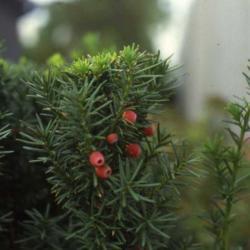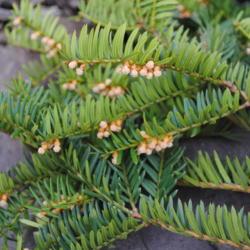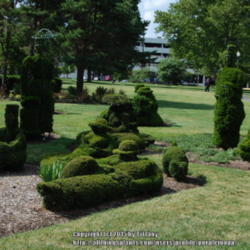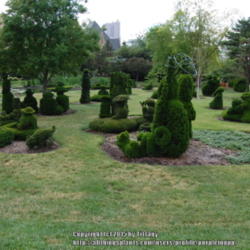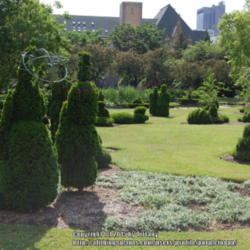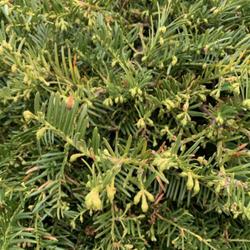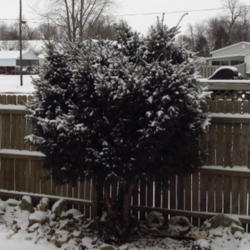Posted by
ILPARW (southeast Pennsylvania - Zone 6b) on Dec 17, 2019 11:22 AM concerning plant:
Yews are small or large trees or shrubs in their own conifer family of Taxaceae, the Yew Family, that includes the similar genus of Torreya. The Plum-Yews (Cephalotaxus) are also similar, but now are in their own family. Yews have flat, linear, pointed needles directly attached to the twigs that are about 1/2 to 1 inch long. They are soft to the touch, but can be a little bit prickly with their sharp points. The genus is dioecious in having the male plants bear soft, yellowish cones (strobili) that release lots of yellow pollen in spring and the female plants bear green strobili that develop into the seeds covered by a red soft aril that gives the appearance of a "yew berry." The red aril is sweetly edible for humans but the seed and all of the rest of the plant is toxic. There are about 7 species in the Northern Hemisphere. The Pacific Yew along the Pacific Northwest of the US & Canada gets to be a large tree to 75 feet high; the English Yew of Europe, West Asia, and North Africa can be a good-sized tree or large shrub; the Japanese Yew of Japan, Korea, and northern China can get to be a tree about 50 feet high or be a large shrub; the Canadian Yew is always a bushy shrub to 8 feet high; and there is a rare Florida Yew that is a bush.

